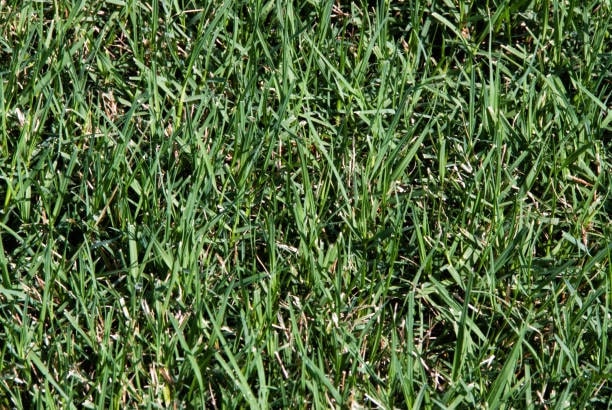
In the gardening world, Bermuda grass is both well-loved and hated. In fact, it carries two nicknames – the “grass lover’s dream” and a “gardener’s nightmare”.
To help you best determine your stance, we’ve jotted down everything you need to know about Bermuda grass. We’ve even included a list of the pros and cons of having it in your garden.
Whether you choose to care for or get rid of it, we’ve provided you with a couple of effective methods to ensure you can get the job done.
What is Bermuda Grass?
Bermuda grass is a tropical grass well-liked for its ability to withstand excessive heat, drought, and damage. Hence, it’s commonly used as a warm-season lawn or pasture grass.
However, it’s also considered an invasive, crop-damaging weed. It can spread quickly and is difficult to remove because of its thick rhizomes.
Scientifically referred to as the Cynodon dactylon, it’s also called a variety of other nicknames, such as:
- Vine grass
- Bahama grass
- Scutch grass
- Couch grass
- Devil’s grass
- Crabgrass
- Dog’s tooth grass
- Wiregrass
Despite its name, the Bermuda grass is actually native to Africa where it thrives in dry, sandy, and fertile soil.
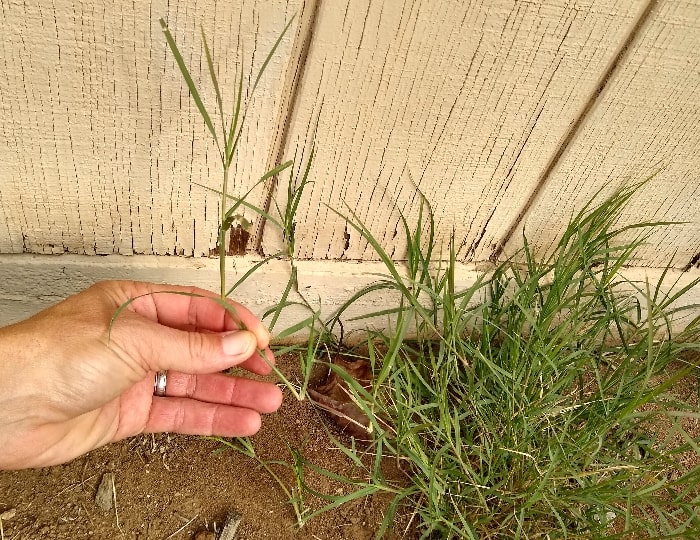
As a warm-season type of grass, you’ll typically find Bermuda grass in tropical and subtropical countries where it receives full sun.
In fact, they don’t tolerate shade or cool climates well. Once temperatures drop, they’ll go into hibernation and turn brown.
Though since the Bermuda grass is a perennial plant, it regrows every year once environmental conditions become favorable again.
It’s interesting to note that it’s considered one of, if not the fastest-growing warm-season grass. It grows aggressively and densely, which sometimes can require weekly mowing as maintenance.
Its aggressive growth rate is attributed to its ability to grow runners both above-ground, referred to as stolons, and below-ground stems, called rhizomes.
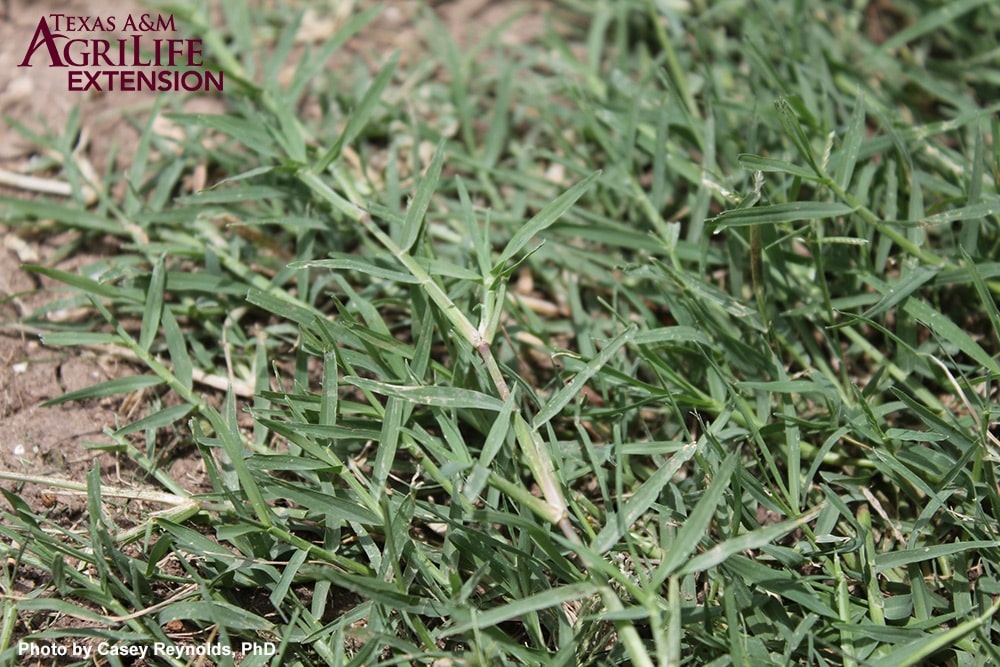
As you can imagine, having stems growing vertically and horizontally gives the Bermuda grass a firm and tight grip on the soil it’s on. It also doesn’t help that its roots can grow more than 6 feet deep.
Apart from that, it’s incredibly resilient to damage and can regrow without a hitch. In fact, even if you get rid of all of the Bermuda grass on top of the soil, its underground roots will be able to produce new growth.
Hence, it’s a challenge to get rid of, especially once it has deeply established its roots. This is because its underground roots can continue to function even without its top half.
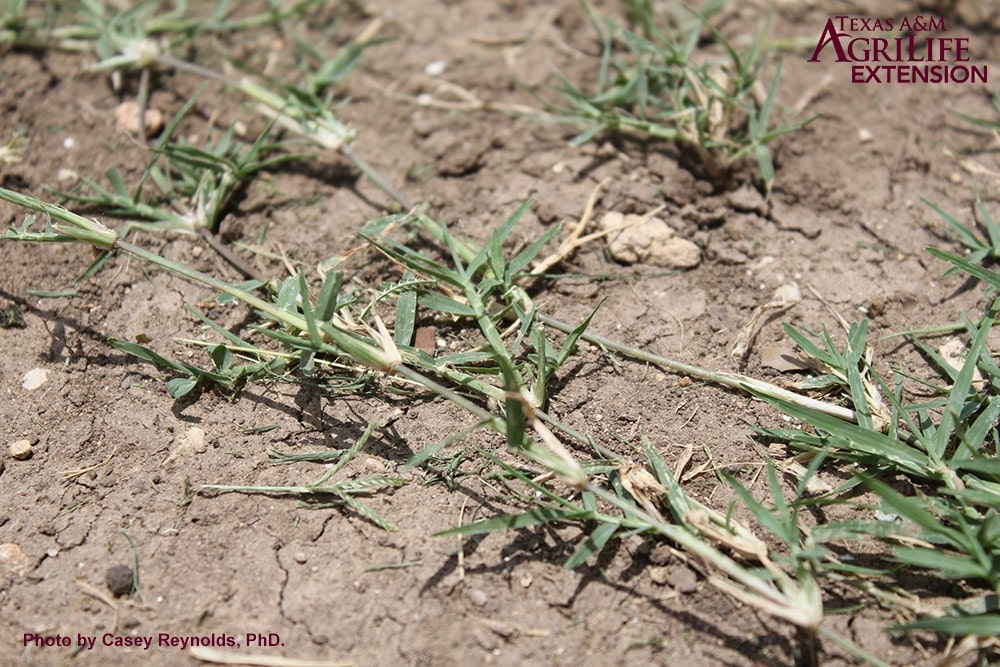
The Bermuda grass also poses a threat to surrounding plants and crops as it can easily overtake and out-compete them, taking away valuable resources from the soil.
In particular, it’s known to cause trouble in vineyards, corn fields, and sugarcane crops, to name a few.
All said, the Bermuda grass’s qualities can be taken as either a blessing or a curse depending on what you plan on doing with it.
How to Identify Bermuda Grass
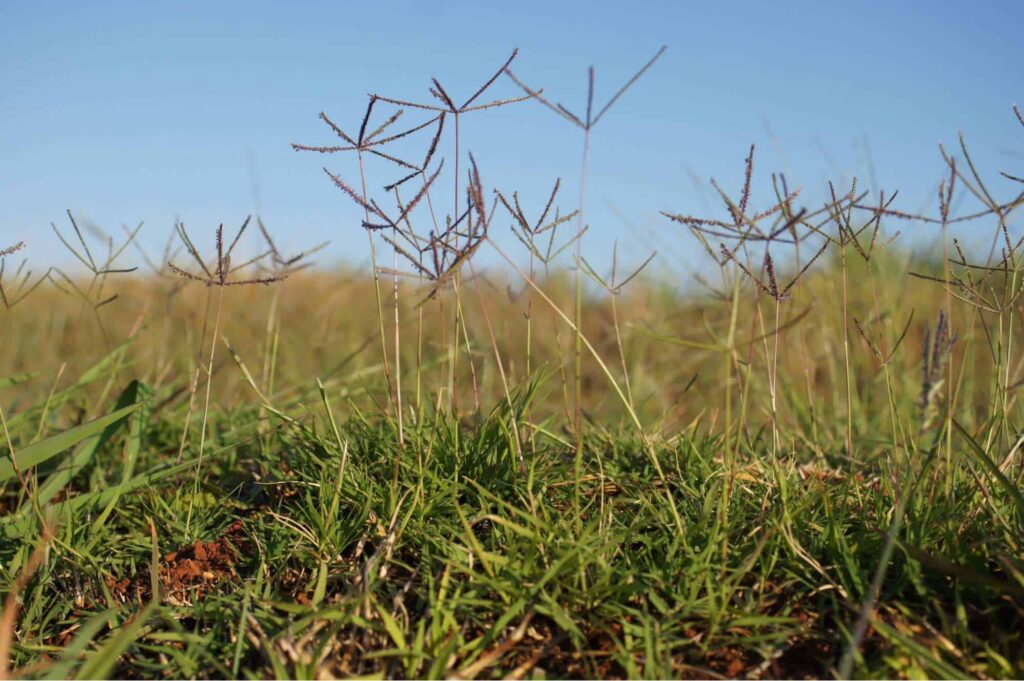
The easiest way to identify Bermuda grass is by its above-ground runners, or stolons, that grow horizontally like a vine.
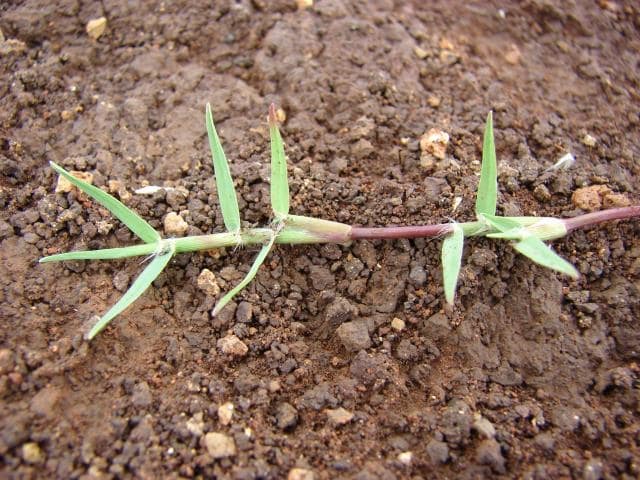
More often than not, Bermuda grass tends to get mixed up with crabgrass (Digitaria species). Luckily, Bermuda grass has a couple more easily recognizable characteristics that help tell them apart from other kinds of grass.
It grows dense light- to dark-green, flat leaves that spread out. Depending on the biotype, the foliage can either be fine or coarsely textured.
In the same way, they can be either short or long, anywhere from 2 to 7 inches long. Though they all typically have a narrow and pointed tip.

Apart from that, Bermuda grass develops seedhead branches or “fingers” that are all connected to the same stem.
Depending on its environmental conditions and moisture levels, its stalk can grow to up to 18 inches tall.
At the tip of its stalk, it sprouts a panicle inflorescence of about 4 to 6 spike-like branches. Though, there are cases wherein it’s as sparse as having only 2 branches and as many as 9 branches.
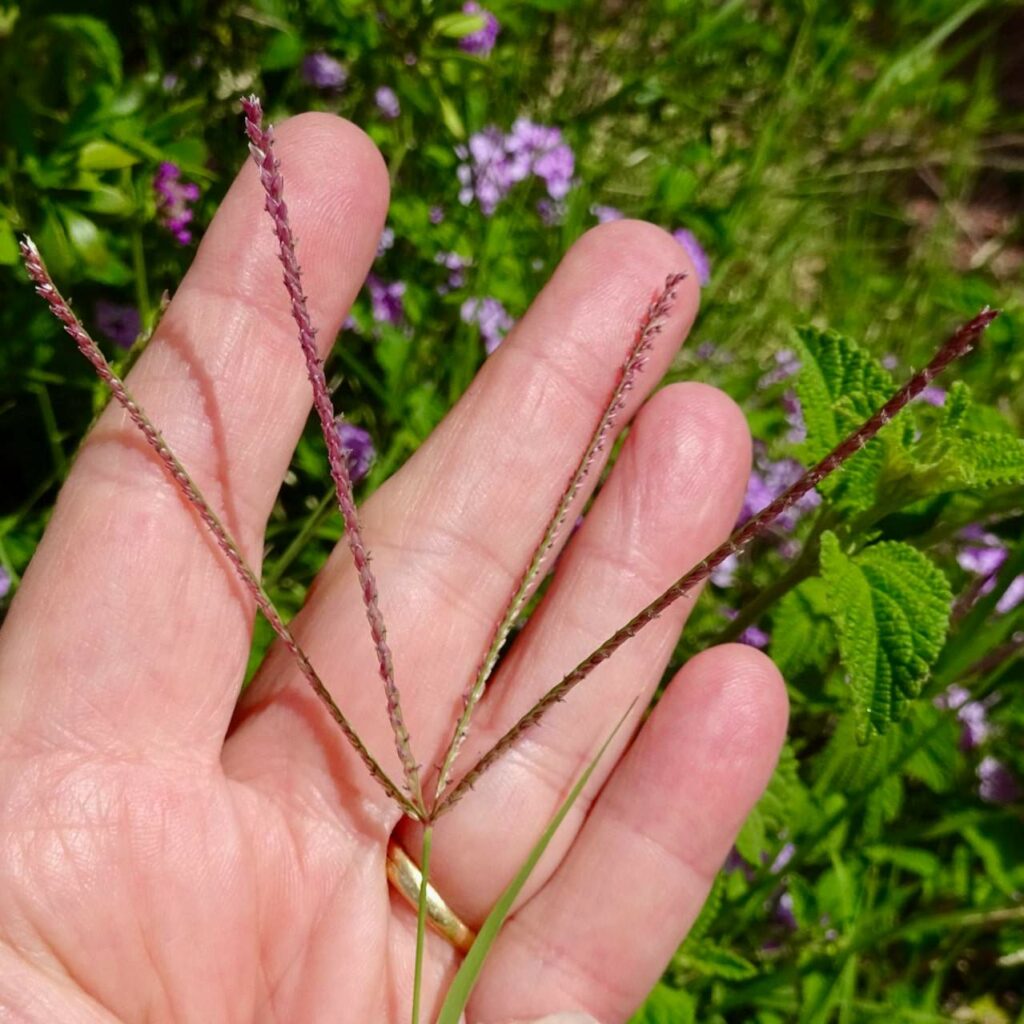
Each branch grows to about 2.5 inches long and is composed of several self-pollinating flowers. Since they’re quite small, you won’t be able to tell that they’re flowers right away.
Upon closer inspection, its pink-purple, oblong-shaped flowers become more apparent. Once they’ve reached their sexual peak, they’ll begin to dangle and release their pollen.
However, it’s interesting to mention that there are certain varieties of Bermuda grass that don’t produce any pollen at all. There are also types of Bermuda grass that have pollen that’s known to cause allergic reactions.
Where to Use Bermuda Grass

Bermuda grass is primarily used as turf in open landscapes, athletic fields, recreational areas, and commercial premises. This is because it’s a graze-resistant grass that thrives in areas that receive full, direct sunlight.
It’s an excellent turf grass that can easily withstand damage from constant use. As a result, you’ll commonly see Bermuda grass in high traffic areas such as:
- Parks
- Playgrounds
- Cemeteries
- Roadsides
- Golf course fairways
- Lawns
Advantages of Using Bermuda Grass

Given the characteristics of Bermuda grass, there are several advantages to using it. Namely: it grows quickly and densely even in infertile soil, tolerates drought and pressure, and doesn’t require much maintenance.
1. Grows quickly and densely
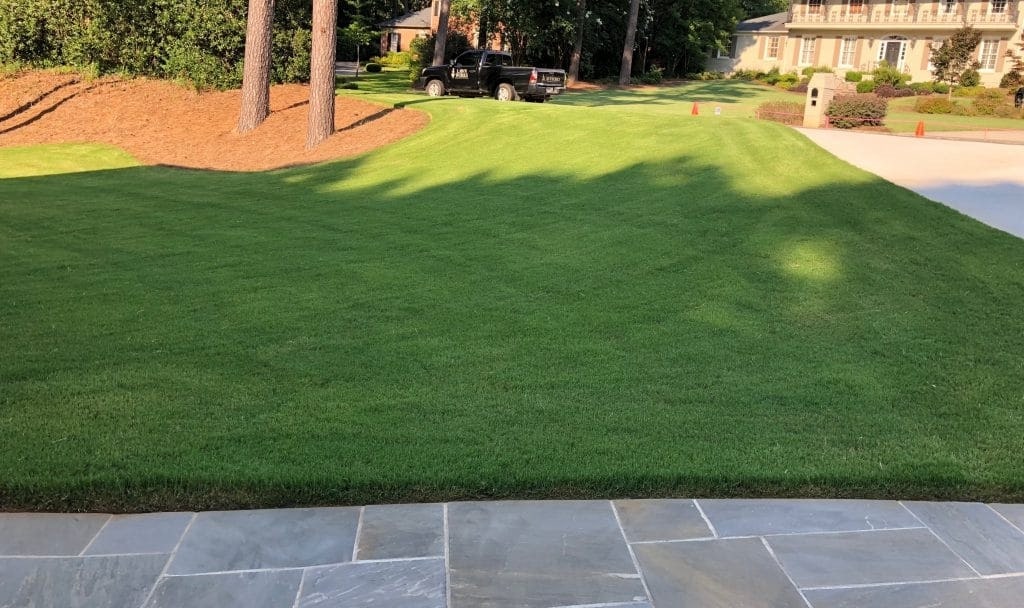
Bermuda grass is a popular option to be used as turf grass because it’s incredibly thick and dense. As mentioned earlier, it has above-ground and under-ground roots that help it crawl all over the ground.
It can quickly spread out onto the soil with little to no intervention. Hence,its heartiness makes it a desirable choice if you’d like a healthy and lush-looking lawn.
2. Durable and tough
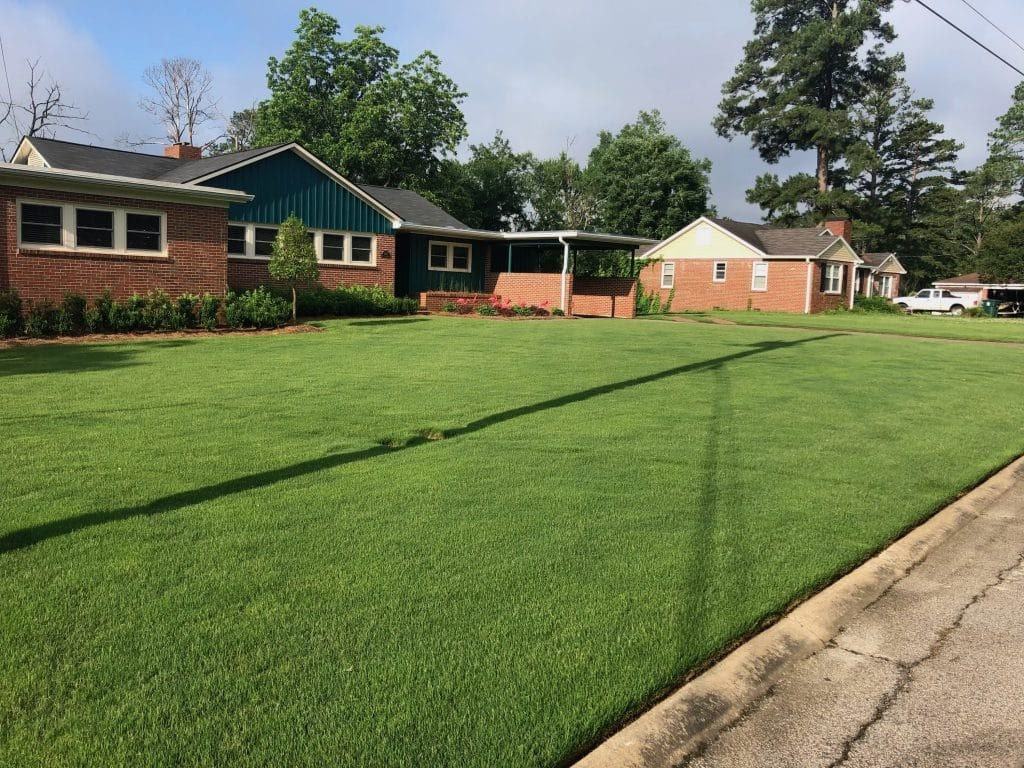
One of the strongest selling points of Bermuda grass is its incredible durability. It’s one of the toughest types of grass out there and can withstand the pressure of constant foot traffic.
Even if Bermuda grass incurs damage, it’s able to recuperate quicker than other species of grass. In fact, it’s known to bounce back rather quickly so you don’t have to worry about having a dead patch for long.
Aside from that, it’s known to be strongly resistant to various diseases and pests. While it’s not completely immune, it’s a relatively resilient plant.
Another asset of having Bermuda grass is that it can withstand extended droughts. In fact, it can survive on an inch of water a week.
3. Grows in poor conditions
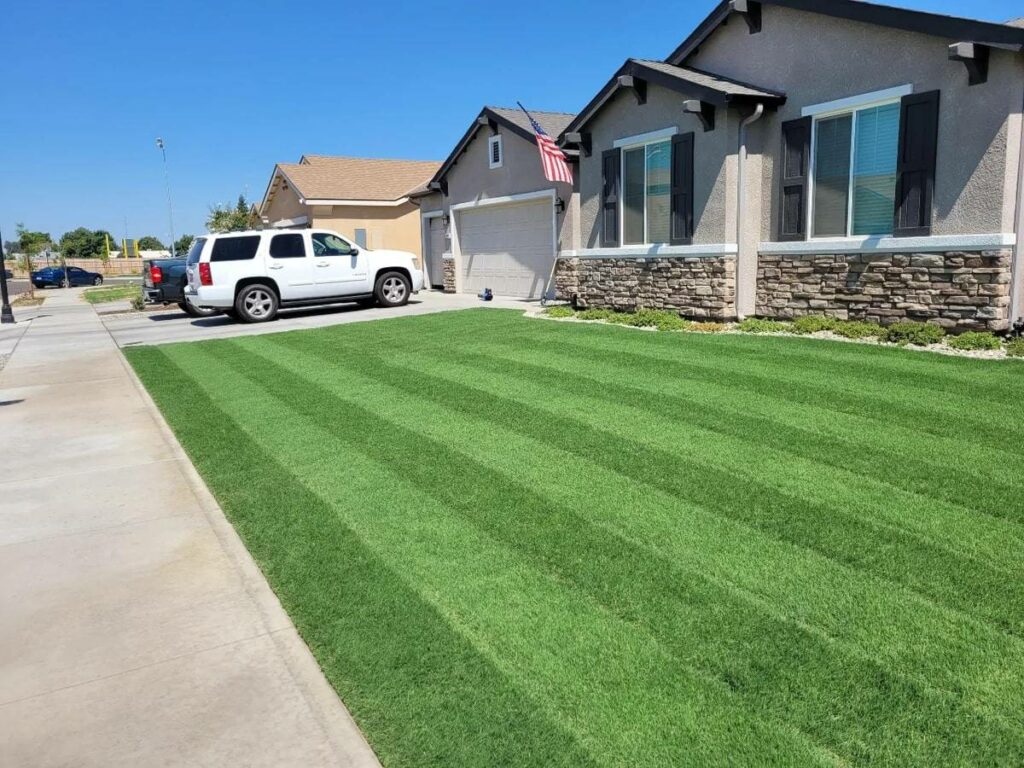
Another reason the Bermuda grass is well-liked is because it’s able to grow and flourish even in the poorest conditions.
While it prefers dry and sandy soil, Bermuda grass can grow almost anywhere. In fact, it can even grow abundantly in clay soil.
Aside from that, Bermuda grass is known to be saline-tolerant and flexible to different soil pH levels. Given its adaptability, it can withstand acidic soil types.
It also doesn’t demand much nutrients or water unlike other grass varieties. Hence, you don’t have to worry about constantly fertilizing and watering.
Though, if you’d like to enhance the appearance of your lawn then we definitely recommend applying fertilizer every now and then.
Nevertheless, if you’re looking for a relatively cheap and low maintenance turf, Bermuda grass is definitely worth considering.
Disadvantages of Using Bermuda Grass
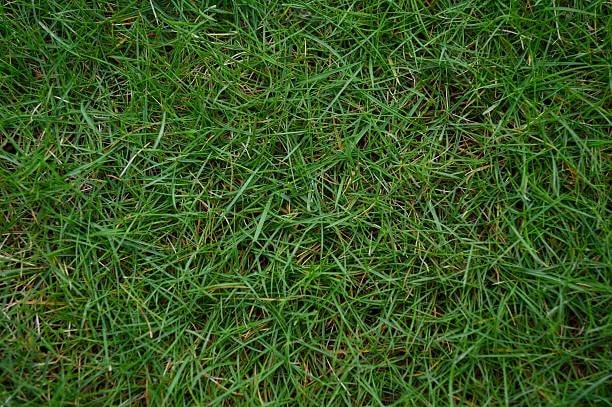
Bermuda grass has some drawbacks that make it difficult to have on your property. Namely: it cannot withstand cold weather, it’s invasive, and it requires regular mowing.
1. Cannot withstand cold weather and shade
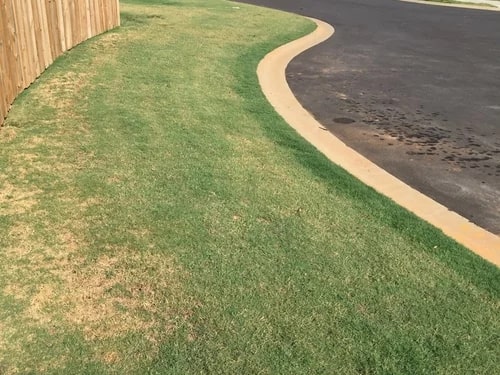
Bermuda grass will only look great in warm temperatures. Otherwise, it’ll turn brown and go dormant, which isn’t the look most are going for when they want a lush-looking turf.
Once temperatures dip and remain below 50F or 10 C, your Bermuda grass will continue to stay dormant. If temperatures don’t warm up, this could severely damage it, too.
Compared to other plants’ sunlight requirements, the Bermuda grass’s demand for full, direct sun can be considered over the top.
In fact, Bermuda grass has poor shade tolerance. If your property doesn’t receive extensive sunlight all day, stunted growth and dead patches may occur.
2. Requires regular mowing
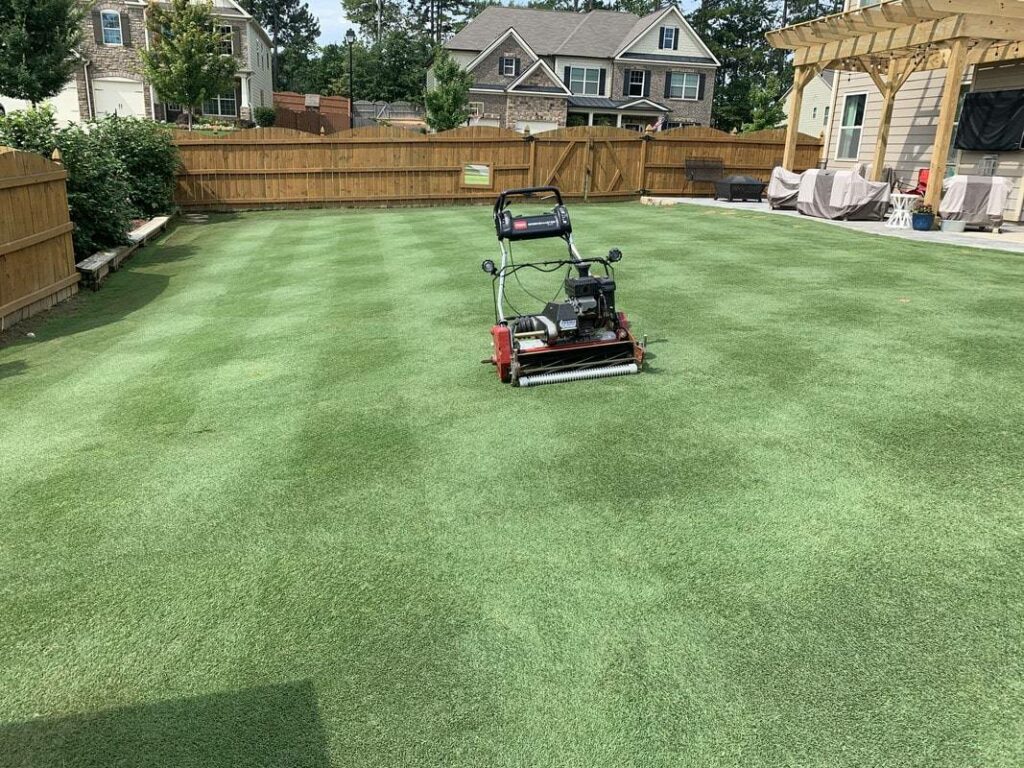
As a fast-growing weed, the Bermuda grass requires regular mowing to ensure that it doesn’t get out of hand.
It’s worth noting that Bermuda grass ought to be mowed every 5 to 7 days or once it reaches about 3 inches tall, except for when experiencing drought.
During the summertime, Bermuda grass is often allowed to grow longer than 3 inches. It acts as a shade, protecting the soil beneath from the harshness of the heat.
If you don’t mind mowing your lawn yourself, then this shouldn’t be a problem. Otherwise, this’ll be a tedious task that you’ll have to perform on a weekly basis.
3. Highly invasive
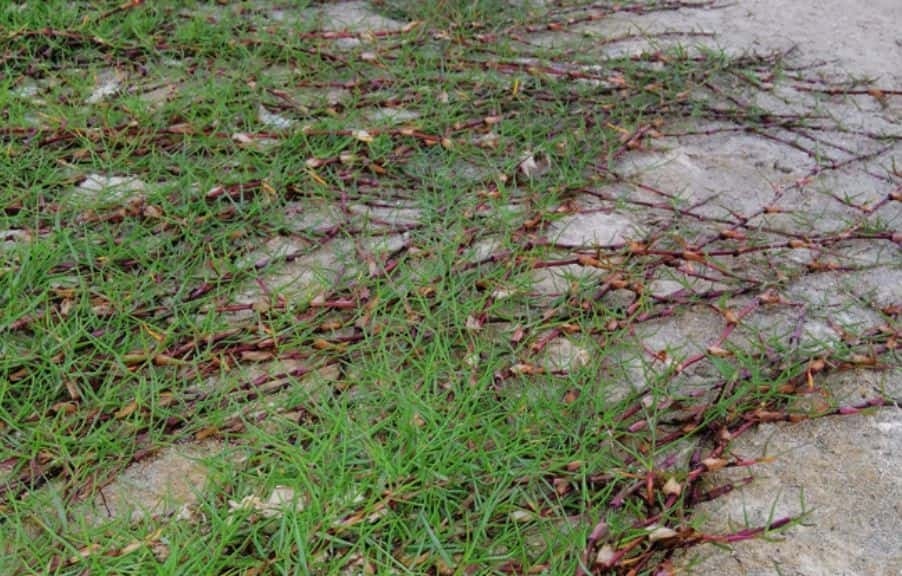
While Bermuda grass can be a great turf grass, it’s widely considered an invasive weed in several countries.
This is mainly because of how quickly it spreads and of how badly it can interfere with local ecosystems and native flora.
Once the Bermuda grass has a firm hold on your soil, it’ll be difficult to completely remove because of its above-ground and under-ground roots.
Despite how lush it looks as a lawn, the challenge lies in maintaining its appearance and keeping it under control.
Without proper upkeep, Bermuda grass can quickly take over garden beds, crops, and in some cases, even trespass into your neighbor’s garden.
How to Maintain Bermuda Grass
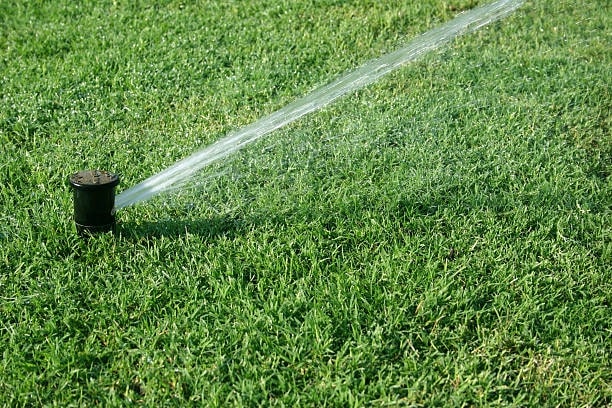
To maintain Bermuda grass, do the following things: regular mowing, weekly deep waterings, fertilization, weed control, and yearly aerations.
1. Regular mowing
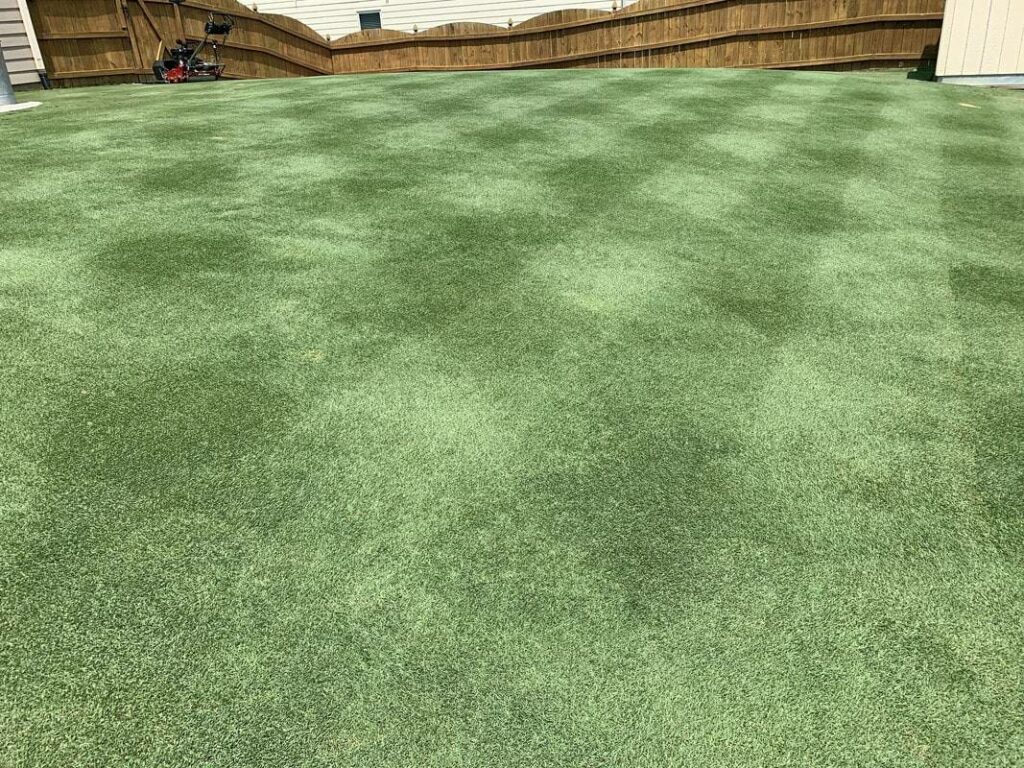
Because of how quickly Bermuda grass grows, it’ll require slightly more frequent moving in comparison to other types of grass.
While it may be a rather tedious job, you’ll be rewarded with a thick, freshly cut lawn. This also helps promote growth, encouraging the grass to grow faster and denser.
It’s generally recommended to mow your Bermuda grass once it reaches about 2.5 to 3 inches tall. You can then mow it down to about 1 to 1.5 inches tall.
It’s important that you don’t mow too low or else you can severely damage its stolons or above-ground roots.
2. Weekly deep waterings
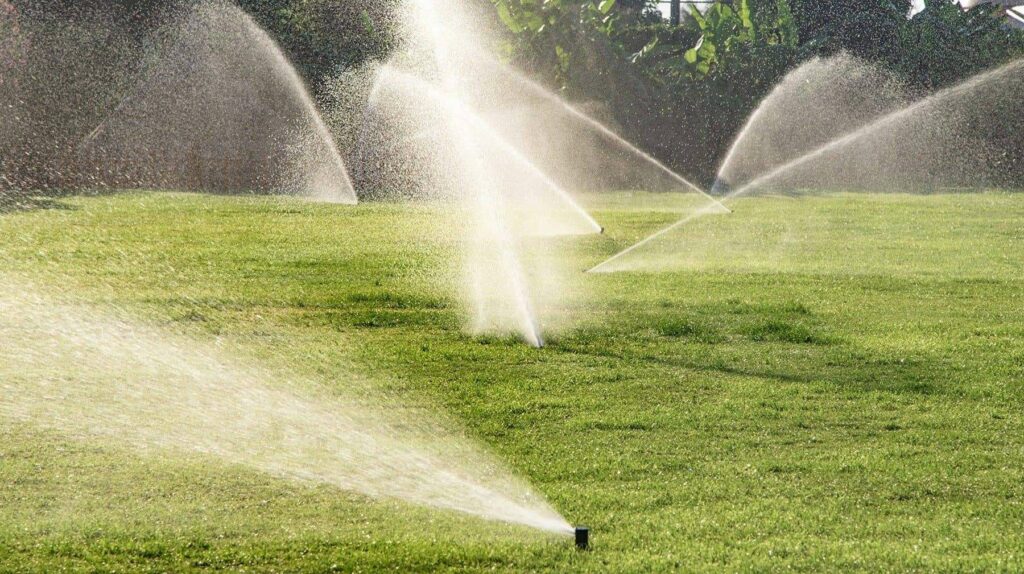
Since Bermuda grass loves dry and warm conditions, you don’t have to water it as frequently as other plants.
In fact, it only needs about 1 inch to 1.5 inches of water every week. Even then, it can withstand biweekly watering sessions.
However, if you live in tropical climate or have your Bermuda grass planted in sandy soil, you may need to water a tad more frequently given these conditions.
Nevertheless, Bermuda grass typically needs a deep watering of about 6 inches each week. Its long roots can penetrate deeply through the soil to absorb any retained moisture, if needed.
3. Fertilization
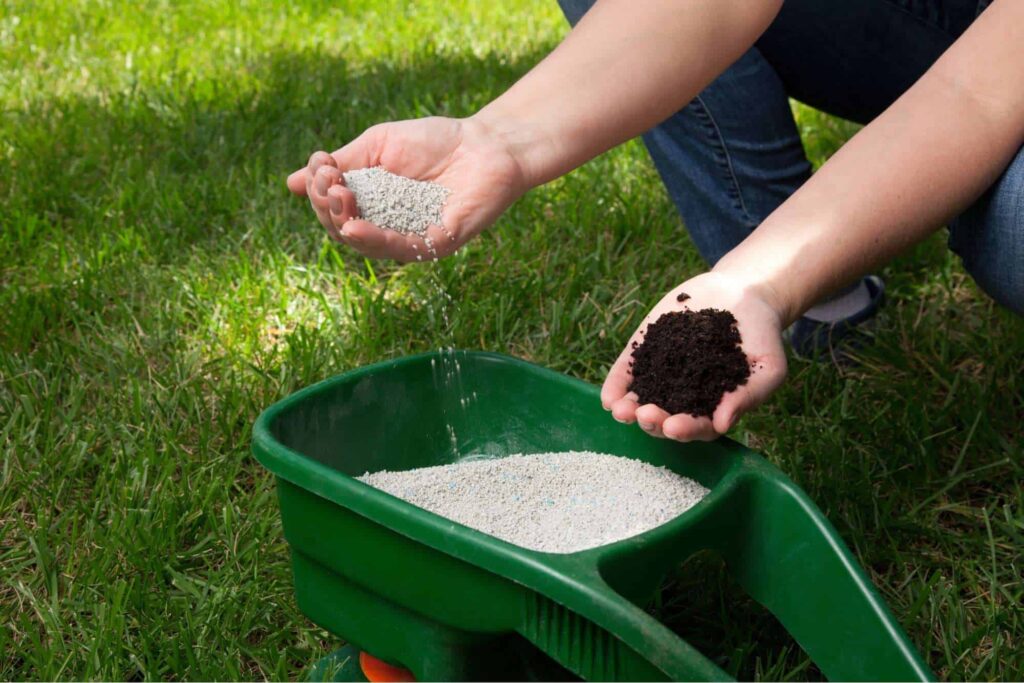
Bermuda grass doesn’t need that much fertilizer thanks to its rather aggressive growth rate.
Though, some would prefer to give it an extra boost, especially during peak growing seasons so that it can reach its full potential.
Adding fertilizer can also help make your Bermuda grass feel and look healthier as it’s packed with more nutrients.
It’s great that Bermuda grass isn’t fussy about the type of fertilizer you can use. In fact, you can use any type of fertilizer with the standard NPK ratio.
4. Weed control
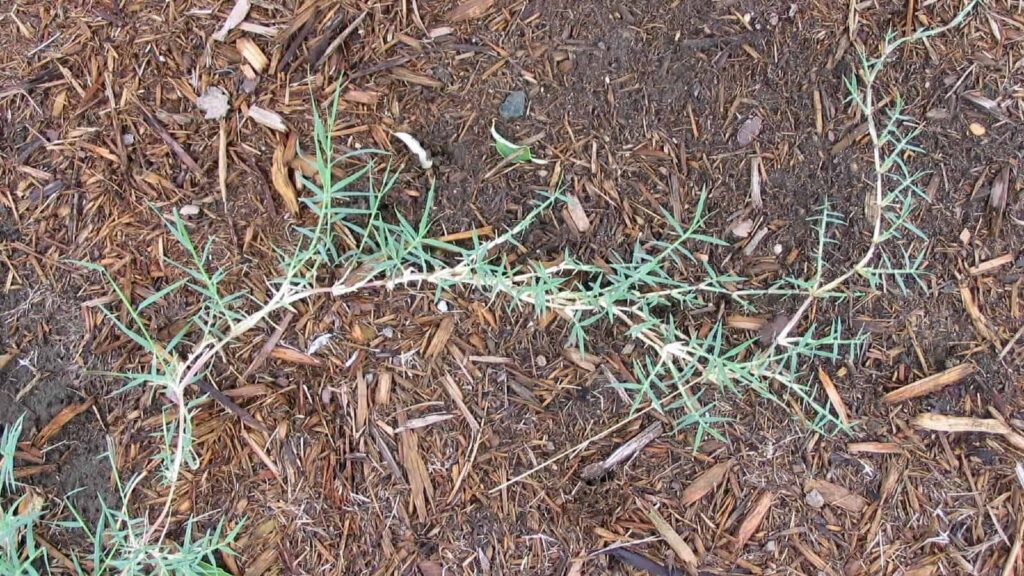
If you don’t stay on top of your Bermuda grass maintenance, you’ll end up having to pay the price for it. As mentioned earlier, it doesn’t take long for it to overtake garden beds and crops without proper upkeep.
Hence, weed control is necessary to ensure that Bermuda grass doesn’t grow in areas where you don’t want it.
It’s recommended to use grass-selective herbicides so that it specifically only targets Bermuda grass to avoid harming your other plants. You’ll need to look for herbicides that actively contain sethoxydim and fluazifop.
5. Yearly aerations
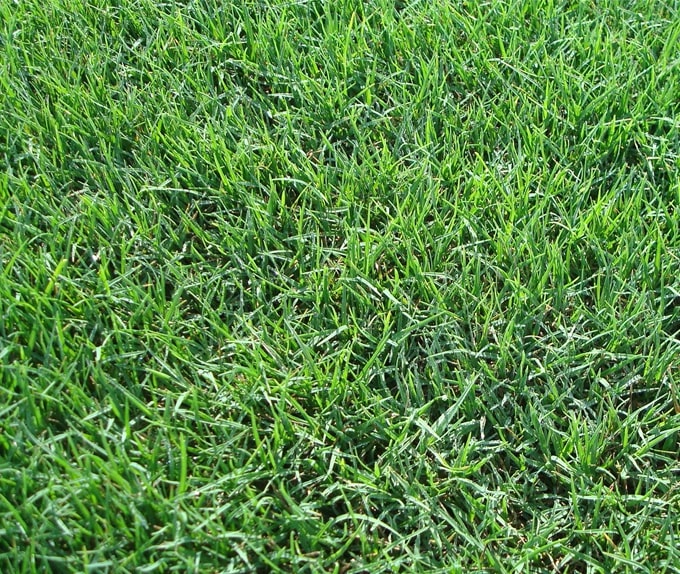
To keep lawns healthy, it’s important to aerate the soil to decompact it. This helps break the soil apart, preparing it to properly absorb more water, nutrients, oxygen, and fertilizer.
Aside from that, aerating the soil increases the amount of air pockets. This decreases the likelihood of severe compaction in the long run.
You’ll know when your soil needs to be aerated when you can no longer penetrate through it. To test this, you can use a sharp object such as a study stick or a screwdriver to drill through the soil.
If you can easily pierce about 2 to 4 inches into various areas of the soil, your soil doesn’t need to be aerated. Otherwise, your soil may be compacted.
It’s ideal to perform aerations after a watering routine or rain. It’s also best to wait until after all of your grass has greened.
You also don’t want to aerate the soil when your grass is dormant such as when it’s experiencing excessive cold or hot temperatures.
How to Remove Bermuda Grass
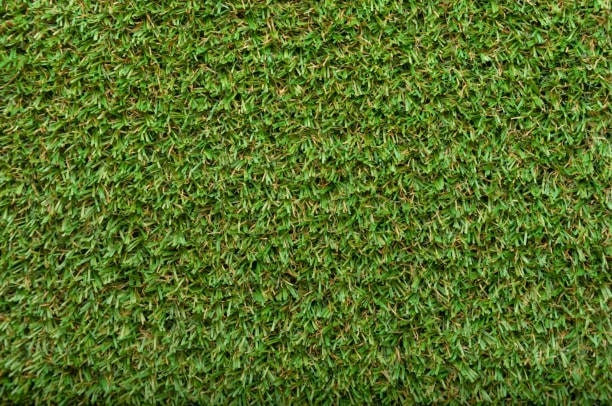
The most effective way to remove Bermuda grass is to use grass killers that contain sethoxydim, fluazifop, glyphosate, or triclopyr.
Alternatively, you can opt for non-toxic methods such as solarization, smothering, or horticultural vinegar.
That said, know that because of its deep roots, it’s difficult to completely and permanently remove Bermuda grass. Hence, it’s important to remain patient and reapply when necessary.
If no at-home removal methods are successful, you can enlist the help of professional weed removers to get the job done for you.
1. Herbicides containing sethoxydim, fluazifop, glyphosate, or triclopyr
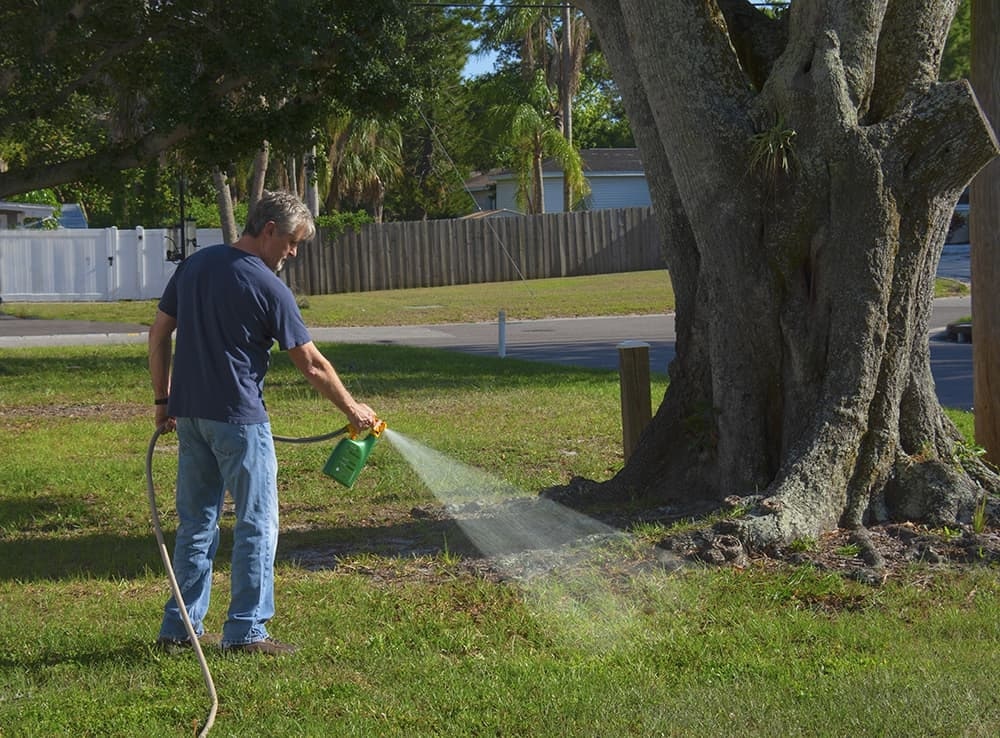
Using herbicides is typically the most popular choice despite being a rather toxic fix. This is because it’s the most efficient method as it’s the quickest solution with the most successful permanent results.
Since glyphosate is a non-selective chemical, you’ll want to be careful about where you use it as it can harm other plants nearby. Triclopyr, on the other hand, is known to do less damage to other grass types.
It’s important to keep in mind that you shouldn’t mow your lawn before or after spraying herbicides. Simply allow the Bermuda grass to soak up the herbicide.
In the same way, refrain from watering or applying herbicide if there’s likelihood of rain. This is because the water will wash away the herbicide before it has been properly absorbed.
Apart from that, avoid application on a windy and rainy day as it could travel to foliage close by.
How-To
- Wear protective equipment such as goggles, gloves, and safety attire.
- Purchase a concentrated herbicide that contains sethoxydim, fluazifop, glyphosate, or triclopyr.
- Apply the herbicide exactly as prescribed.
Keep in mind that concentrated herbicides have varying strength levels, from 18% onwards. Dilute your herbicide as instructed depending on the concentration of its active ingredient.
To effectively kill Bermuda grass, you need to apply a generous and even amount. For larger areas, use a pump sprayer, while for smaller areas you can use a small trigger squirter.
- Repeat the application if necessary.
- Once the Bermuda grass has effectively dried up, you can either leave them to decompose or remove them by hand.
2. Solarization
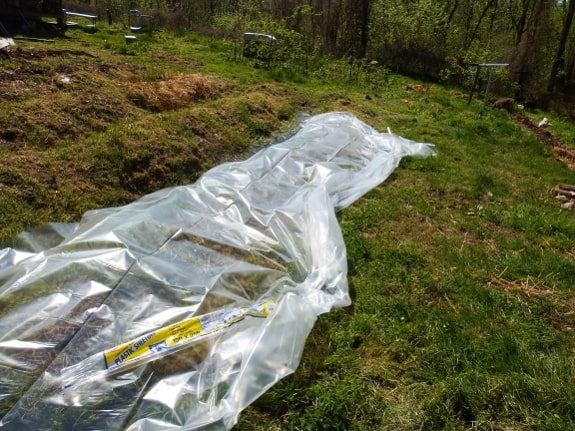
Solarization involves uprooting and baking the Bermuda grass in the heat of the sun until it dies. To magnify the heat, it’s recommended to cover the Bermuda grass with a clear plastic.
However, don’t expect to see results right away. In fact, it may take a few months for the Bermuda grass to completely burn.
How-To
- Mow the Bermuda grass as short as possible. The less foliage, the better as it acts as a protectant against direct sunlight.
- Plow your soil about 6 inches deep to ensure that all of the underground roots are exposed to the surface.
- Cover the Bermuda grass in a large, clear sheet of plastic.
To ensure that the plastic doesn’t fly away, anchor it with heavy stones.
- Plow the soil every two weeks to ensure that you’ve gotten all of the rhizomes and stolons from the soil and onto the surface.
- Leave the clear plastic over the Bermuda grass for at least a month to allow the sun’s direct heat to dry up and kill it.
- Once the Bermuda grass has effectively dried up, you can either leave them to decompose or remove them by hand.
3. Smothering

Smothering your Bermuda grass is another fuss-free method to eradicate it. However, it doesn’t guarantee complete removal.
This method entails choking your Bermuda grass by removing sunlight and water. You can use various materials such as:
- Landscape cover
- Cardboard
- Gravel
How-To
- Mow the Bermuda grass as short as possible. The less foliage, the better as it acts as a protectant against direct sunlight.
- Evenly spread out your landscape cover, cardboard, or gravel onto the Bermuda grass.
If you’re using a lightweight material, weigh it down with heavy stones to prevent it from flying away.
- Continuously monitor if the Bermuda grass has spread. If it has, this indicates that the installation wasn’t performed correctly.
Reinstall the cover and add another layer, if necessary. Results should be seen in about 2 months.
- Once the Bermuda grass has effectively dried up, you can either leave them to decompose or remove them by hand.
4. Horticultural vinegar
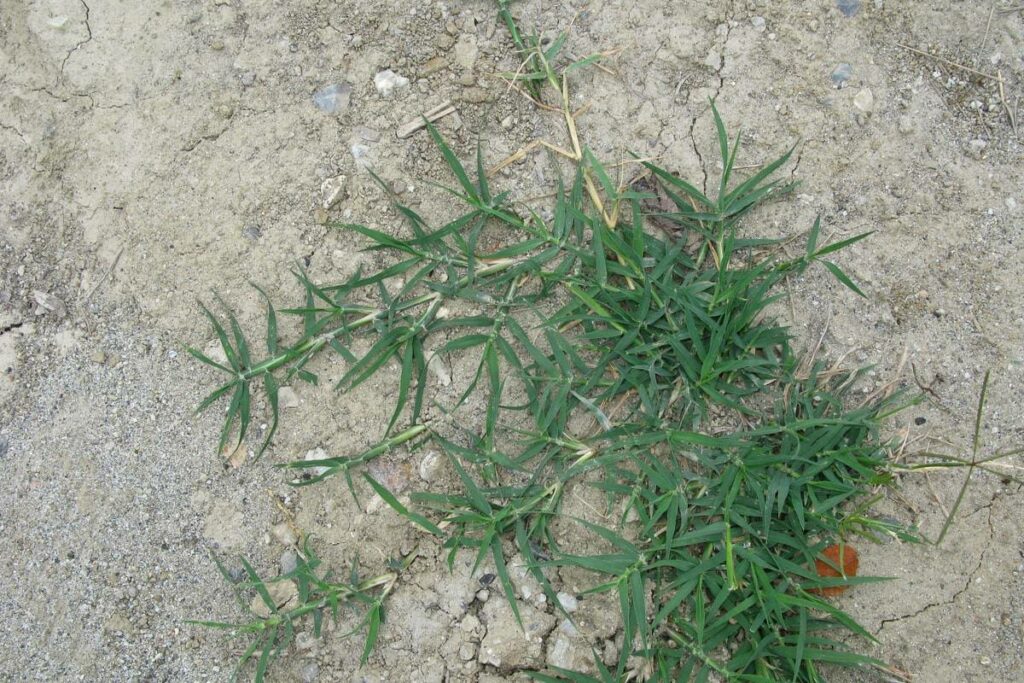
While using horticultural vinegar is one of the least toxic methods, it’s still a non-selective acid that will kill any plant that it comes into contact with.
Nevertheless, it’s an inexpensive, organic, and relatively environmentally safe eradication method that doesn’t require any chemicals.
Horticultural vinegar comes in a variety of concentration levels of acetic acid, from 15% to as high as 45%.
In most cases, 20% horticultural vinegar is enough to kill stubborn weeds. Though, if your Bermuda grass continues to put up a fight, you can increase the concentration levels.
How-To
- Wear protective equipment such as goggles, gloves, and safety attire.
- Evenly spray horticultural vinegar onto the Bermuda grass.
Keep in mind that horticultural vinegar isn’t selective and will kill any plant that it comes into contact with.
To effectively kill Bermuda grass, you need to apply a generous and even amount. For larger areas, use a pump sprayer, while for smaller areas you can use a small trigger squirter.
Alternatively, you can use an unused paint brush and paint the weeds.
- Continuously monitor the status of the Bermuda grass. Results should be apparent after 24 hours, though this still varies on the level of concentration used and the state of the weather.
- Once the Bermuda grass has effectively dried up, you can either leave them to decompose or remove them by hand.
- Additional applications of horticulture may be required to ensure that even the deepest rhizomes have been killed off.
FAQs on Bermuda Grass
Bermuda grass is not a vine. It’s a perennial type of grass that comes from the Poaceae family.
You can dig up Bermuda grass, but it’ll be a difficult task because they have thick rhizomes. As a result, they have a rather firm grip on the soil.
Digging up Bermuda grass will prove to be a rather laborious task as you’ll have to dig deep enough to properly remove all of its underground roots.
Bermuda grass generally doesn’t grow well in shaded areas as it’ll develop thin, dried spots. It requires at least 6 hours of full, direct sunlight.
Bermuda grass becomes dormant once temperatures fall to below 50F or 10C. They’ll remain dormant until temperatures rise and continue to stay warm.
Bermuda grass turns reddish-purple when it’s stressed or damaged from the cold weather. Dropping temperatures cause the increase of anthocyanin pigments, which indicates that the plant doesn’t have enough phosphorus.
When temperatures rise and warm up, the Bermuda grass will return to its normal green color.




